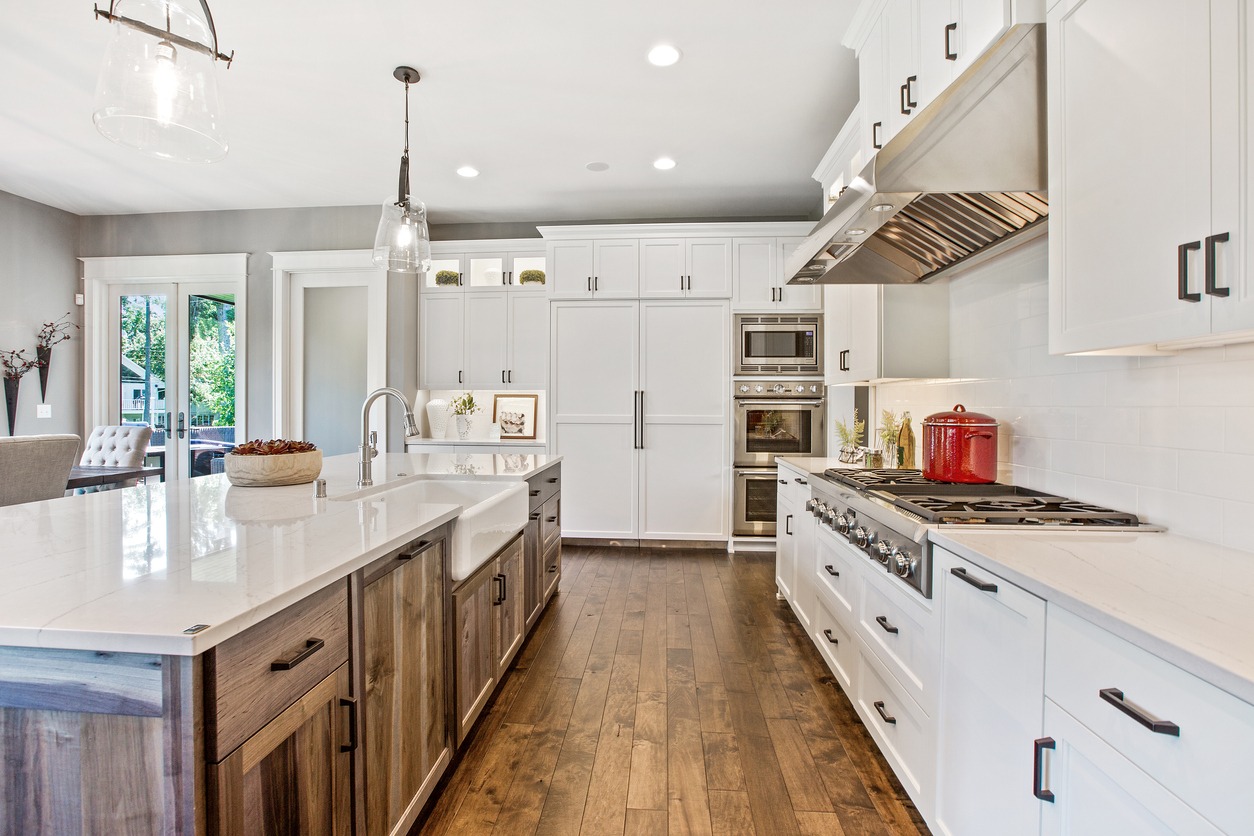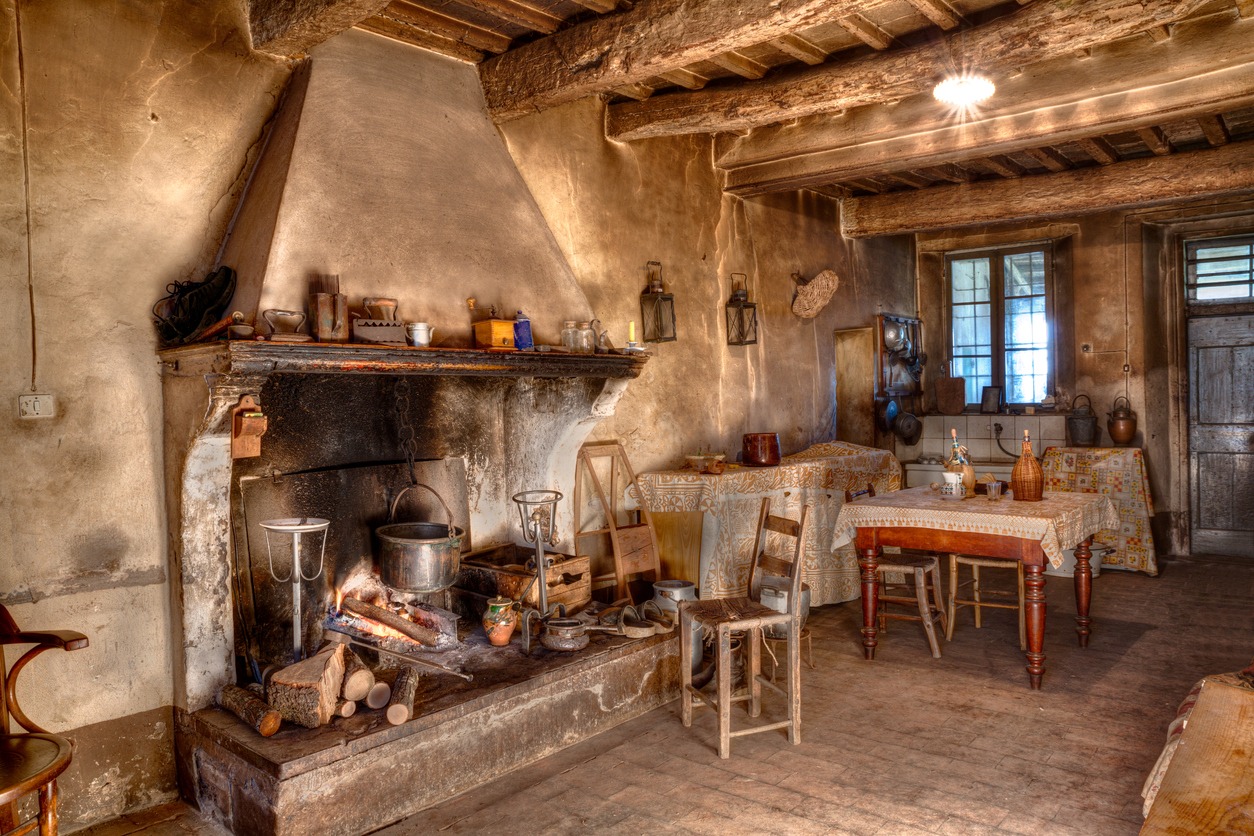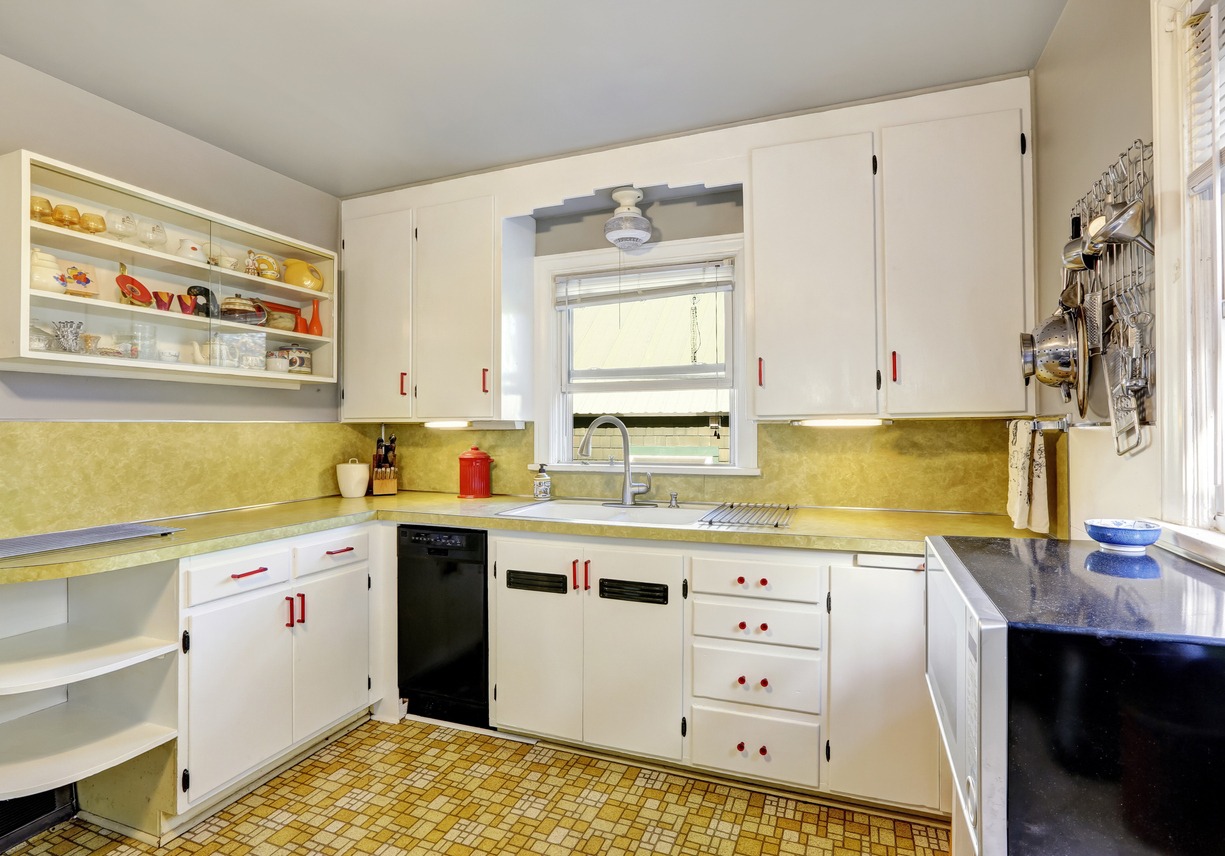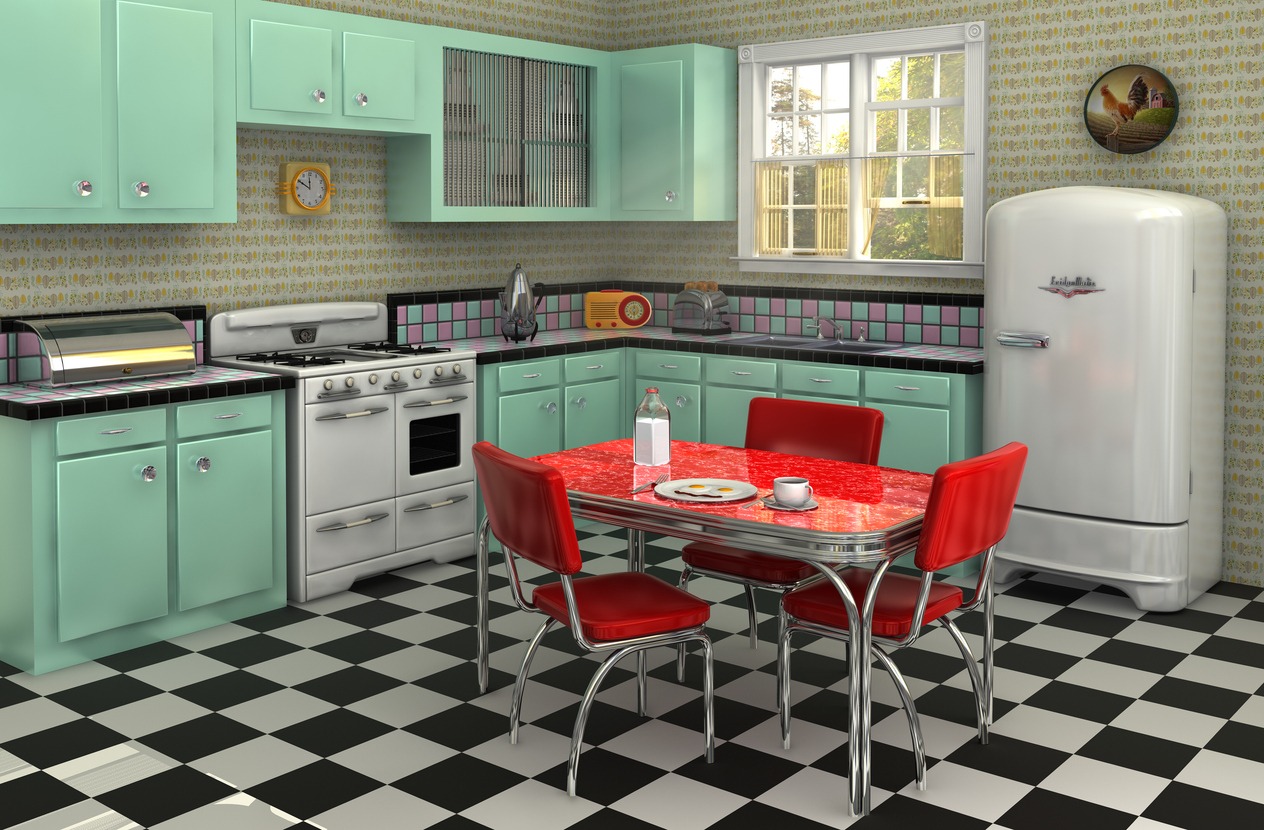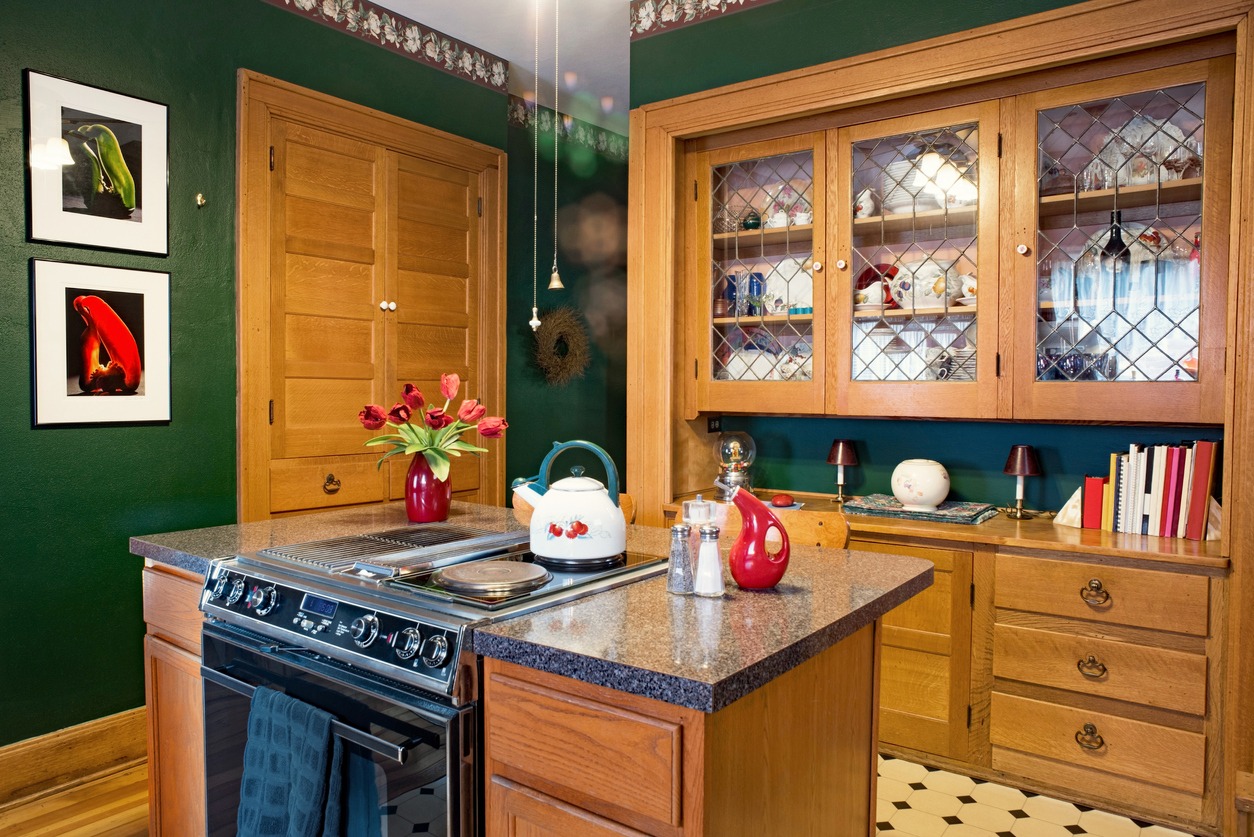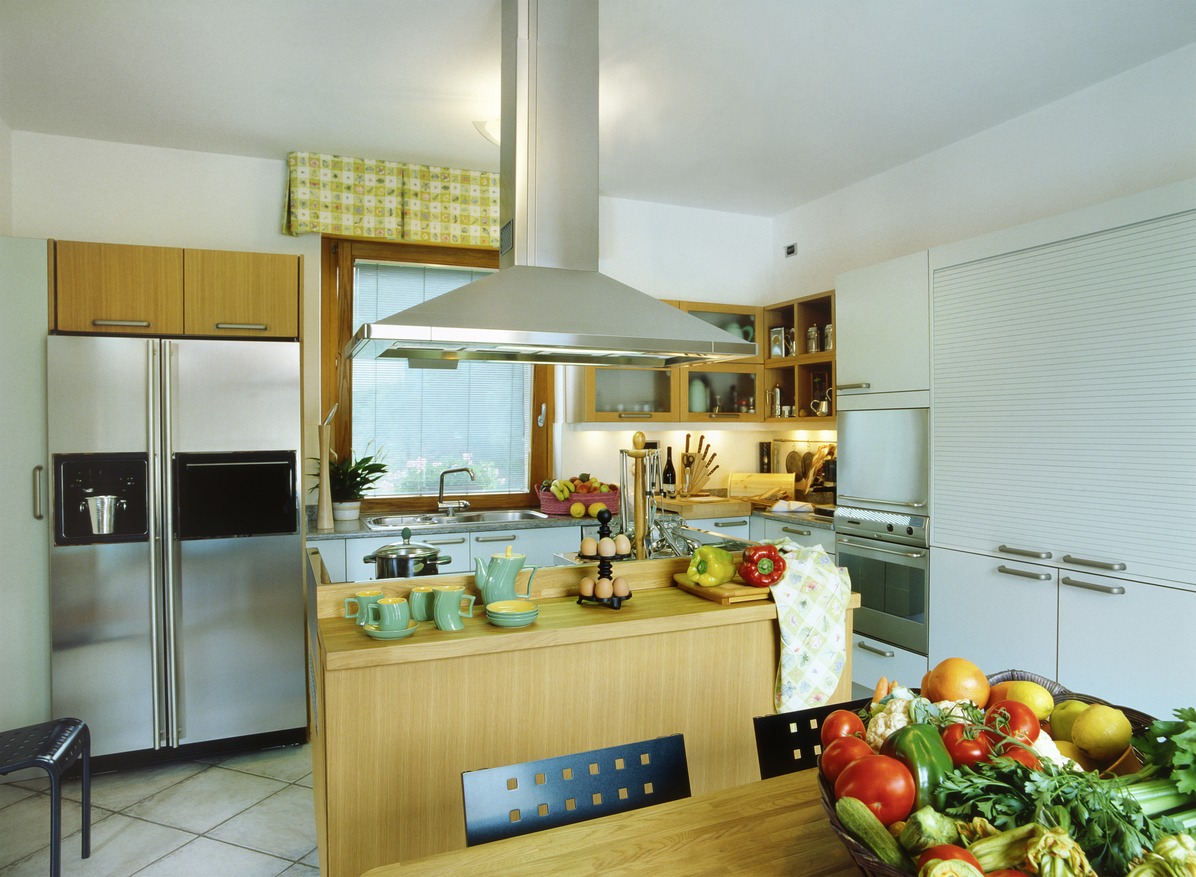The kitchen is one of the rooms in the house that expresses the homeowner’s personal taste. But did you know that the kitchen also reflects the world around you, such as its cultural values, family norms, and technologies? The ever-evolving technologies have made the kitchen one of the rooms with the most deep-seated changes over the 20th and 21st centuries.
It is fascinating to learn about the history of the kitchen, but it is also fun to gain insights from a sociological perspective. The kitchens in our homes tell us a lot of things about the prevailing culture, and they are a reflection of its values and philosophies. That is why it is no wonder that as people and cultures have changed, so have their kitchens.
If you are wondering how kitchens have evolved through the years, we are here to help you. In this article, we are going to give you information about the remarkable transformations of kitchens influenced by cultural changes, advancements in technology, and changing lifestyles. Read on to learn more about the evolution of the kitchen through time and trends.
Kitchens in the 1900s
Back in the 1900s, the American kitchen was far from the social space that we know today. Aside from being an area to prepare and cook food, the kitchen back then also served as a utilitarian workroom. It often contained laundry and the sewing machine. During these times, the kitchen was a usually dark and dreary room located out of sight at the back of the home where the mother would spend her whole day working.
Kitchens in the 1900s were not social gathering places. But since it held the wood stove, it was the place where people huddled to keep warm during the winter seasons. Back then, refrigerators were not yet invented. People instead used ice boxes to keep their food cool. Most homes had cooking stoves, particularly hearths that need constant monitoring throughout the day, adjusting the stoves, adding fuel, adjusting dampers, and pouring in more water to keep the hot water tank full.
Kitchens in the 1910s
When the 1910s came, kitchens were still used as the utility or workroom but had the addition of a very heavy cast-iron stove, an icebox, and a sink. The stoves during these times often performed triple duty, such as cooking, heating water for baths, and washing. In addition to that, they were also used as the home’s furnace to provide heat. There were also a few luxury electric appliances that were introduced during this decade, such as very basic ranges, refrigerators, and waffle irons.
Kitchens in the 1920s
In the 1920s, people started to look past the kitchen as a mere workroom. They began to incorporate a bit of style to them, such as using lighter colors to brighten up the space, installing linoleum floors, and adding colorful rugs. People also started to paint their cabinets with different colors. During this decade, sanitation was a major focus. In fact, most newspaper and magazine advertisements back then focused on food safety and kitchen hygiene.
Aside from that, another big emphasis in the 1920s was efficiency through organization. These were the times when the use of kitchen calendars, grocery list wheels, cookbook holders, cabinets with blind-corner pull outs, and built-in spice racks became popular.
Kitchens in the 1930s
To forget about the dreary world outside during the era of the Great Depression, kitchens in America during this decade saw even more color to brighten up the room. Kitchens became more colorful with bright linoleum and dinnerware. The Shelvador refrigerator was also introduced, which was the first fridge that held food in the door, which is a design that is still used today. In the 1930s, kitchens started to adopt a greater element of fun.
Kitchens in the 1940s
After the war, people were inspired to cheer things up. During these times, most American kitchens were still white or cream in color. But two-toned kitchens, such as bright red/white and yellow/blue became popular. Also, instead of free-standing, kitchen cabinets began to be built into the walls. Aside from that, refrigerators were becoming more affordable to the middle class.
Kitchens in the 1950s
Any lingering relics of the sterile white kitchen were thrown out the window during the 1950s. In this decade, color was not just limited to the linoleum floors, rugs, and some accents throughout the kitchen cabinetry. It was an era of pink, green, yellow, and blue sinks, stoves, and refrigerators, along with bold floral wallpaper.
In the 1950s, kitchens also saw a structural change as it is no longer consigned to the back of the home as it was beginning to be the shining star of the home. Kitchens during this period were located more at the forefront where the homemaker can interact with members of the family in the living areas as she prepares food.
Refrigerators in this decade came with the first ice makers and automatic defrosters. Appliances like oven toasters, mixers, and blenders were introduced to the market. Electric stoves are also very common during these times, and they are available in almost any color that you want.
Kitchens in the 1960s
“The Brady Bunch” with its recognizable wooden cabinets, vivid red backsplashes, and matching countertops may come to mind when you think of ’60s kitchens. They were defined by mixing style and function. Homemakers who were more and more busy preferred linoleum floors, built-in cabinets, and particle board and laminate cabinets that were simple to maintain. The layouts of the time were clearly defined L- and U-shaped, which gave kitchens a cozier but not claustrophobic feel.
Aside from that, the 1960s also brought futuristic large appliances like in-home automatic dishwashers and multiple-burner cooktops, which were more reliable and at times even self-cleaning. There was also an emergence of earth-tone shades like avocado green and harvest gold for kitchens during these times.
Kitchens in the 1970s
When the 1970s came, homeowners became committed to brightening and modernizing their kitchens, while not losing the homey look and feel of their parent’s kitchen. Sunny colors and cheerful touches were very popular in kitchens during this decade. That is why many people started to use wallpaper in their kitchen walls, ceiling, and cabinets. These wallpapers came in wonky patterns and bright blues. In addition to that, new technologies were introduced, such as refrigerators with water and ice dispensers, electric cooktops, and separate ovens.
Kitchens in the 1980s
The 1980s were a decade of excess, and kitchen designs were no exception. A trend towards larger homes in the suburbs provided added square footage for breakfast-eating areas of the kitchen to open into a family room. With an open floor plan and other elements like glass cabinets, the kitchen felt more spacious.
With wide center and side islands, eating nooks, and specific breakfast sections, kitchens have changed from being locations for cooking only to becoming hangout spaces. There was greater space for lounging and moving around as everything from furniture to appliances underwent a design overhaul. The kitchen also took on a more soothing aesthetic with a light, pastel color scheme.
Laminate cabinets, counters, and backsplashes, which are consistently popular, as well as tile countertops, frequently appeared to increase the usability of this newly discovered gathering place. One particularly well-liked design craze of the time was off-white laminate cabinets with oak trim, an appearance inspired by European style. However, it was short-lived.
Kitchens in the 1990s
When the 1990s came, the kitchen became the center of the home. As homes grew in size, the designs of kitchens started to look like trendy restaurants, with pro-style appliances, such as professional stove top rangers, big refrigerators, and tons of elegant granite. Countertops made of granite became ubiquitous in the evolving stylish kitchen. While the era’s green granite countertops were abandoned, its black granite countertops continued to be popular. At the end of the decade, however, white, deeply veined granite became trendy.
In addition to that, the 1990s was also the decade when stainless steel appliances became popular. To counterbalance the sleek nature of these appliances, most homeowners chose bright, homey woods and ceramic tile for their kitchens. Pickled oak and maple cabinet finishes along with white-painted cabinetry were also gaining popularity during these times.
Kitchens in the 2000s
In the 2000s, stainless steel was a must, and the decor was straightforward and minimalistic. Large kitchen islands with built-in stoves and granite surfaces are in style. Kitchens are designed for entertaining, once more. The greatest food processors and stand mixers, of course, take center stage on the countertop. This is also the decade for kitchen gadgets, and there is practically an infinite variety available on the market, such as rice steamers and bread makers.
Kitchens in the 2010s
When the 2010s came, everything in a modern kitchen was Instagram-worthy. These include white cabinets, reclaimed wood floors, and quartz counters. It was the era of the “trophy kitchen.” While granite is still the most common countertop material, many people are experimenting with other materials like slate and concrete as well as artistic backsplashes. Large kitchen islands with lots of areas for entertaining are thought to be a necessity, regardless of the material chosen.
Large range hoods give kitchens a luxurious feel, and high-end, sophisticated equipment, such as high-speed ovens with induction cooktops, impresses guests and conveys a sense of social standing. With recessed cabinet lights and dropped lighting above the kitchen islands, lighting is also given a lot of attention.
No luxury is ignored, including built-in flat-screen TVs for viewing all your favorite cooking shows. Cabinets reach the ceiling to provide a sense of grandeur. Extensive pantries are a need. Perfect aesthetics and maximum functionality are the objectives. Generally, kitchens are now considered a prestige symbol.
Conclusion
No matter how we may feel about our current era of kitchens, there is one aspect of the American kitchen that does not seem to change, and that is being the heart of the home and the social gathering place. Even though many years have passed, the kitchen is still a place where family and friends gather to talk, share stories, and enjoy a meal together.
The kitchen has indeed undergone a remarkable evolution through time and trends, adapting to the changing needs, lifestyles, and advancements in technology. From the primitive hearths of the past to the modern, high-tech culinary spaces of today, the kitchen has transformed from a functional necessity to a hub of creativity, socialization, and innovation.
In the future, the kitchen will likely adopt more cutting-edge technologies, environmentally friendly practices, and inclusive design concepts. It continues to be a place that accommodates our constantly shifting demands while also maintaining its identity as the center of the house. We hope this article helped you learn more about the evolution of the kitchen through time and trends.

